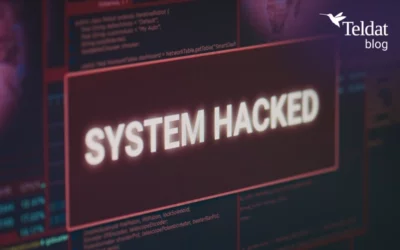
Surge in Investment in Artificial Intelligence Technologies
A recently released report by Advice Strategic Consultants, a leading consultancy, highlights the transformative potential of Artificial Intelligence (AI) in both the productive and service sectors in Spain. The predictive analysis suggests that the widespread adoption of AI across various economic sectors could yield a substantial 1.2% annual increase in Gross Domestic Product (GDP), projecting this economic upswing from 2023 to 2030.
Passenger Counting through Artificial Intelligence
Video processing in the realm of public transportation has emerged as a cutting-edge tool, transforming the way passenger flows are managed and monitored. One of the most notable use cases is real-time passenger counting through artificial intelligence and image processing technologies.
The implementation of video processing systems for real-time passenger counting offers a range of significant advantages, enhancing operational efficiency through optimized resource allocation and route planning based on current demand. This automated approach not only reduces operational costs but also improves safety by providing real-time information on vehicle occupancy. Preventing buses from becoming overcrowded plays a crucial role in ensuring safety in public transportation. Passenger overcrowding can create conditions conducive to emergencies, such as difficulties in evacuation during accidents or the rapid spread of contagious diseases. Maintaining a proper balance between demand and bus capacity fosters a safer environment, minimizing risks associated with congestion and ensuring a safter travel experience for all users.
Passenger Counting via Ticketing Systems
A longstanding method for passenger counting involves ticketing systems, relying on the compilation of data from tickets sold or validated on each journey. While less precise compared to artificial intelligence, ticketing-based counting provides a general overview of occupancy and demand. This approach proves especially valuable in settings where more sophisticated solutions may be economically impractical. However, it’s crucial to note the significant limitations of this system. Ticketing-based counting may not provide an accurate real-time reflection of occupancy, as it doesn’t factor in variables such as passengers who fail to validate their tickets or the specific time and location of each passenger disembarking. Consequently, it falls short of enabling comprehensive and real-time monitoring.
Passenger Tracking via Wi-Fi
The use of Wi-Fi for passenger monitoring presents an enticing option to gather mobility data in public transportation. This method involves a device emitting a Wi-Fi probe to detect passengers’ devices. Given the prevalence of mobile phones and the widespread use of Wi-Fi connectivity, estimating vehicle occupancy through this technology is plausible. However, it’s imperative to acknowledge the substantial limitations in terms of accuracy. Errors in counting may arise as not all passengers have their mobile Wi-Fi signal activated, and some may possess multiple detectable devices (company phones, laptops, tablets, etc.). The most notable limitation of this technology stems from the “MAC address randomization” system. For instance, platforms like Apple use a randomized Media Access Control (MAC) address while scanning Wi-Fi networks when not associated with any such network. Consequently, this method cannot be employed for continuous tracking of a device with passive observers of Wi-Fi network traffic, even when the device is connected to a mobile network.
Video Processing in Public Transportation
As technology continues to advance, the future prospects of video processing in public transportation are indeed exciting. Integration with fleet management systems and the expansion of predictive capabilities will enable the anticipation of demand peaks, taking service efficiency to new heights. Furthermore, the application of deep learning algorithms will make it possible to identify anomalous behaviors or emergency situations, bolstering the overall security of public transportation. The potential connectivity with mobile applications could also provide users with real-time information about vehicle occupancy, ushering in a new era of travel experiences that are both comfortable and seamlessly efficient.
Conclusion on Video Processing Public Transportation
The adoption of video processing for real-time passenger counting in public transportation marks a groundbreaking leap in optimizing operations and services. Its manifold benefits, spanning from precise counting to enhanced planning and security measures, make this technology pivotal for the positive evolution of urban mobility. As we delve into new possibilities and refine algorithms, the future of passenger management in public transportation promises to be smarter, more efficient, and intricately attuned to the evolving demands of modern cities.
At Teldat, we stay abreast of the latest technologies, and consequently, we have already implemented artificial intelligence in our communication devices, ensuring we meet the present and future needs of the public transportation industry.
References
- https://argos.red/videovigilancia-en-autobuses-escolares/
- https://www.avigilon.com/es/blog/school-bus-cameras
- https://dirigentesdigital.com/tecnologia/crece-un-30-inversion-empresas-inteligencia-artificial#:~:text=Seg%C3%BAn%20un%20estudio%20elaborado%20por,2017%20a%20un%2050%25%20actualmente
- https://www.estrategiasdeinversion.com/analisis/bolsa-y-mercados/informes/la-inteligencia-artificial-podria-incrementar-n-660587#:~:text=En%20total%2C%20se%20estima%20que,1%2C47%20billones%20de%20euros
- https://www.tcgroupsolutions.com/blog/desventajas-del-wifi-tracking-para-el-conteo-de-personas/
- https://support.apple.com/es-es/guide/security/secb9cb3140c/web

























